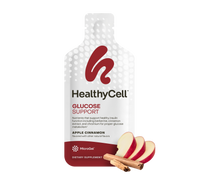Have fruits and vegetables become less nutritious? In other words, can you get the micronutrients you need to stay healthy from food alone? Micronutrients are needed for many important functions in your body. But it’s becoming harder to get them from food alone. Due to modern agricultural and shipping practices, nutrient deficiency in plants is becoming more common, leading to more individuals who have a nutrient deficiency. This is true even among those who are very health conscious and eat what should be a highly nutritious diet.
Micronutrients are essential compounds your body needs in small, but adequate, quantities to function correctly. Vitamins and minerals are the two types of micronutrients, and approximately forty of them are essential for a healthy metabolism. Other beneficial nutrients are not considered micronutrients but are also critical for optimal health, such as phytochemicals (also known as phytonutrients) like antioxidants and polyphenols.
Most of us have probably heard that we should get these necessary micronutrients from our diets. And that’s true; a healthy diet should be your primary source of nutrition. But is it possible to get all the micronutrients you need to stay optimally healthy from food alone?
Not anymore.
Recent studies show fruits and vegetables grown today contain significantly fewer vitamins and minerals than they did decades ago. Aside from our on-the-go, convenience-focused lifestyles, even the most disciplined eaters aren't getting what they need to stay healthy. For example, one study stated that to get the same amount of vitamin A our grandparents would have gotten from one orange, we would have to eat eight oranges today!
According to a study at the University of Texas published in Journal of the American College of Nutrition, 1950s nutritional data from the U.S. Department of Agriculture related to 43 different fruits and vegetables was compared to similar data from 1999. The study found “reliable declines” in the quantities of many micronutrients, including, calcium, phosphorus, iron, riboflavin, and vitamin C. (1)
Many studies support these findings. An analysis of nutritional data from 1975 to 1997 was studied at the Kushi Institute, showing calcium levels in 12 vegetables were lower, on average by 27 percent; while iron, vitamin A, and vitamin C levels saw similar average declines by 37 percent, 21 percent, and 30 percent, respectively.
These findings are not limited to the United States. The British Food Journal published a study of British nutrient data for 20 vegetables from 1930 to 1980, with similar findings to the Kushi Institute study. It found that average calcium, iron, and potassium levels dropped by 19 percent, 22 percent, and 14 percent, respectively. (2)
Is it any wonder that most Americans have some form of nutrient deficiency? According to a recent study conducted by researchers at the University of Illinois at Urbana-Champaign and published in the Journal of Human Nutrition and Dietetics, even the perceived “balanced diet” of most Americans may leave you woefully deficient in several critical nutritional categories. (3)
There are two main culprits for this decline in nutrition: soil depletion and longer supply chains.
1) Soil Depletion
Modern agricultural processes have increasingly robbed more and more nutrients from the soil that grows our crops, and this results in a nutrient deficiency in plants, or less nutritious produce. The bad news is that each generation of crops designed for faster growth, climate adaptability, and resistance to pests, and farmed with chemical pesticides, gives rise to less nutritious yields than the one before.
2) Supply Chain
Our supply chains have gotten longer, which means the time from harvest to when we eat fruits and vegetables is longer, sometimes many weeks. The nutrient value of produce degrades literally every hour after being picked. Exposure to heat, light, and oxygen are the three causes of micronutrient loss during transit from harvest to consumption.
Blanching (quick exposure to boiling water) is a common practice in the food industry to kill bacteria, but it also kills nutrient value. Depending on the length of the blanching period and the type of product being heated, micronutrient loss can be as little as 10 percent or as high as 80 percent. Another study on the effects of blanching on nutrients called phytochemicals showed that antioxidant activity was reduced by 30 percent in peas, and by 50 percent in spinach. (4)
The Journal of the Science of Food and Agriculture published a 2007 paper from the University of California Davis that stated vegetables lose 15 percent to 77 percent of their vitamin C content within one week of harvest, even when properly refrigerated. Since produce is not always correctly refrigerated, the micronutrient loss is likely greater. The micronutrient loss is even more significant with higher temperatures, according to a study at Penn State University.
Another Penn State University Study found that spinach can lose up to 90 percent of its vitamin C content within a mere 24 hours of harvest.
Why is it essential to fill the gaps in your diets?
According to Professor of Molecular and Cell Biology at UC Berkeley, Dr. Bruce Ames, “micronutrient deficiency can mimic radiation (or chemicals) in damaging DNA by causing single- and double-strand breaks, oxidative lesions, or both,” which in turn are the root causes of many diseases and accelerated aging.
Symptoms of micronutrient deficiency by specific vitamin and mineral are known, but in general, symptoms of nutrient deficiency include lethargy, fatigue, poor sleep, digestion issues, mood imbalance, and clouded focus.
What can you do to make sure you get adequate micronutrients?
Now that you have a better understanding of what causes a nutrient deficiency in plants and why micronutrients are needed for your health, let’s take a look at how to get them. There are several things you can do to improve your intake of micronutrients, some requiring more effort than others.
1) Grow your own food organically and eat right after picking to limit nutrient deficiency in plants.
2) Shop more often and buy less, which limits the time your fruits and vegetables sit on the shelves before eating.
3) Store produce properly in the refrigerator to reduce nutrient reduction.
4) Cook with shorter time periods. Briefly steam or sauté vegetables, so they retain their vibrant colors. Long cooking times destroy nutrient value.
5) Slice fruits and vegetable right before eating. If you slice them too far in advance, they will oxidize (turn brown due to a process called enzymatic browning)
6) Try micronutrient supplements. Take a high-quality, pill-free, highly absorbent multivitamin. For example, Healthycell’s Bioactive Multi contains 21 essential vitamins and minerals, 11 phytonutrients, and 3 prebiotics, in highly absorbable, bioactive forms. Or Healthcell's AM/PM Cell Health Formula with 90+ vitamins, minerals, antioxidants, probiotics & enzymes.
[i] Davis, Donald R., Melvin D. Epp, and Hugh D. Riordan. "Changes in USDA food composition data for 43 garden crops, 1950 to 1999." Journal of the American College of Nutrition 23.6 (2004): 669-682.
[ii] Mayer, Anne-Marie. "Historical changes in the mineral content of fruits and vegetables." British Food Journal 99.6 (1997): 207-211.
[iii] An, R., C.Y. Chiu, and N.A. Burd. “Nutrient intake among US adults with disabilities.” Journal of Human Nutrition and Dietetics. 28.5 (2014): 465-475.
[iv] Hunter, Karl J., and John M. Fletcher. "The antioxidant activity and composition of fresh, frozen, jarred and canned vegetables." Innovative Food Science & Emerging Technologies 3.4 (2002): 399-406.




